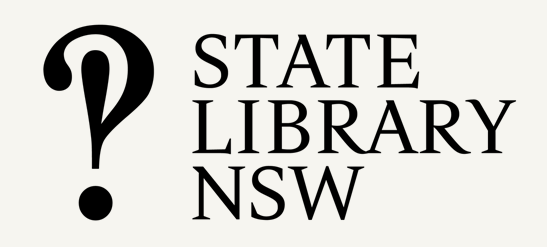Protocol 3 is called ‘intellectual property’ but covers what is known as ICIP: Indigenous cultural and intellectual property. ICIP is an internationally-recognised term for the right of Indigenous peoples to decide how their cultural heritage, traditional knowledge and traditional cultural expressions may be depicted, and who has permission to do this. It is based on the principles of self-determination and free, prior and informed consent.
Thinking about this in a library context, ICIP recognises the right of Aboriginal and Torres Strait Islander peoples to determine the use and access provisions for collection materials that reflect their own history, culture, language and traditions.
It is also about the moral rights of Aboriginal and Torres Strait Islander peoples to be identified as the source and owner of knowledge expressed in these materials; to prevent it being used in insulting, offensive and misleading ways; and, to refuse its publication.
ICIP doesn’t only apply to collection items that were made by Aboriginal and Torres Strait Islander people or communities, but also to material produced by anyone outside of that community – whether they are Indigenous or not – that depicts or describes forms of traditional cultural expression. These might include photos, artworks or recordings of folklore, music or dances; material that shows characteristic elements of a community’s heritage, such as a distinctive painting style; or items created for spiritual and religious purposes.
Protocol 3 urges us to develop processes for recognising Indigenous cultural and intellectual property rights, and to apply those processes in consultation with the Aboriginal or Torres Strait Islander peoples affected by them. Depending on the material and the community in question, this consultation may be with the creator or person depicted, a descendent or descendent group, or a native title corporation that has government authority to speak for all the clan groups in their area. It is vital that any consultation is respectful, informed and ethical, and that there is adequate time for meaningful dialogue and consideration.
In the video below, Damien Webb talks about the importance of recognising the right of Aboriginal and Torres Strait Islander peoples to determine the use and access provisions for collection materials that reflect their own history, culture, language and traditions, and the responsibilities that we have as custodians of that knowledge within the library.
Case studies
> Consulting with Elders to improve collection information and management
The National Library of Australia learned many valuable lessons from working with Pitjantjatjara Elders to find out more about heritage photographs in the library’s collection.
> Creating a process for cultural permissions
State Library Victoria’s Cultural Permission Program was developed to give Aboriginal and Torres Strait Islander people and communities whose ancestral material is held in the library’s heritage collections the authority to decide how that material may be used by others.
> Storylines: reconnecting collections to communities, families and individuals
Storylines is a State Library of Western Australia project that aims to break down barriers to Aboriginal and Torres Strait Islander peoples accessing collection materials, and recognise the importance of reconnecting this material to communities, families and individuals.
Further resources
Policies and guidelines
Position statement: Indigenous Cultural and Intellectual Property – NSLA (2021)
Engaging with Traditional Owners – AIATSIS (2021)
A guide to effective and meaningful community engagement, including free, prior and informed consent.
Code of Ethics for Aboriginal and Torres Strait Islander Research – AIATSIS (2020)
The code ensures that research with and about Aboriginal and Torres Strait Islander peoples follows a process of meaningful engagement and reciprocity between the researcher and the individuals and/or communities involved in the research.
Protocols For Using First Nations Cultural And Intellectual Property In The Arts – Terri Janke/Australia Council for the Arts (2020)
Revised in 2019, this protocol guide endorses the rights of Indigenous people to their cultural heritage and supports Indigenous creative practice.
National Museum of Australia: First Nations cultural rights and engagement policy (v2.0, 2022)
This policy sets out how the Museum engages with First Nations peoples about these rights in the course of Museum activities, including acquisitions, exhibitions, research, education and other programs.
Articles and presentations
Information sheet: Indigenous Cultural and Intellectual Property (ICIP) – Arts Law Centre of Australia
ICIP in practice: Working with collections and communities – Kirsten Thorpe (Australian Digital Alliance Forum, video, 2020)
Kirsten Thorpe, Senior Researcher at the Jumbunna Institute for Indigenous Education & Research (University of Technology, Sydney) shares her experience working with collections and communities to manage First People’s Cultural Expression and Knowledge in collections.
Rights to Culture: Indigenous Cultural and Intellectual Property (ICIP), Copyright and Protocols – Jean Kearney and Terri Janke (Terri Janke and Company, 2018)
Audio and video
What are ICIP Protocols? – Terri Janke (video, Terri Janke and Company, 2019)
ICIP in practice: The CALL collection – Karen Manton (Australian Digital Alliance Forum, video, 2020)
Karen Manton, Project Officer with the Batchelor Institute of Indigenous Tertiary Education, shares her experience working with collections and communities to manage First People’s Cultural Expression and Knowledge in collections.
Creative Connections: First Nations protocols in a digital space – Terri Janke/Australia Council for the Arts (video, 2020)
Indigenous cultural and intellectual property lawyer Terri Janke talks about the considerations and restrictions around accessibility for First Nations peoples in the digital space, and how protocols can be observed and practiced online.
Friday essay: who owns a family’s story? Why it’s time to lift the Berndt field notes embargo – Claire Smith, Gary Jackson, Geoffrey Gray and Vincent Copley (The Conversation, 2018)
“Imagine your grandfather was interviewed about his life, over many hours, some 80 years ago. Everything he says is written down, enough to fill more than 20 notebooks… Then you learn that the wife of the person who wrote down your grandfather’s stories has locked the notebooks away. You and your family are not allowed to read them.”
Deciphering Arrernte archives: The intermingling of textual and living knowledge – Jason Gibson, Shaun Angeles, Joel Liddle (Univerity of Hawai’i Press, 2019)
Interviews exploring some of the issues Arrernte peoples confront as they work through archives, including the limitations of conventional cataloguing requirements and the importance of reading archival texts in a way that sees them emplaced and tested against the knowledge of Elders, and the role of digital technologies in the future dissemination of cultural materials.
Case studies
Case study – Yiwarra Kuju: the Canning Stock Route videos – Arts Law Centre of Australia (videos, 2012)
“Curtis Taylor and Monique La Fontaine from FORM’s Canning Stock Route Project talk about the development of the collection [which] was acquired by the National Museum of Australia in December 2008. These videos discuss a number of legal issues involved with this project including ICIP, Moral Rights, Copyright and Licensing.”
Safeguarding Cultural Heritage – The Case of the Sacred Wandjina – Delwyn Everard (WIPO Magazine, 2011)
Delwyn Everard, Senior Solicitor at the Arts Law Centre of Australia, discusses the challenges Aboriginal communities face in protecting their cultural heritage.
See also: Protecting the Wandjina (Arts Law Centre of Australia, 2015)









